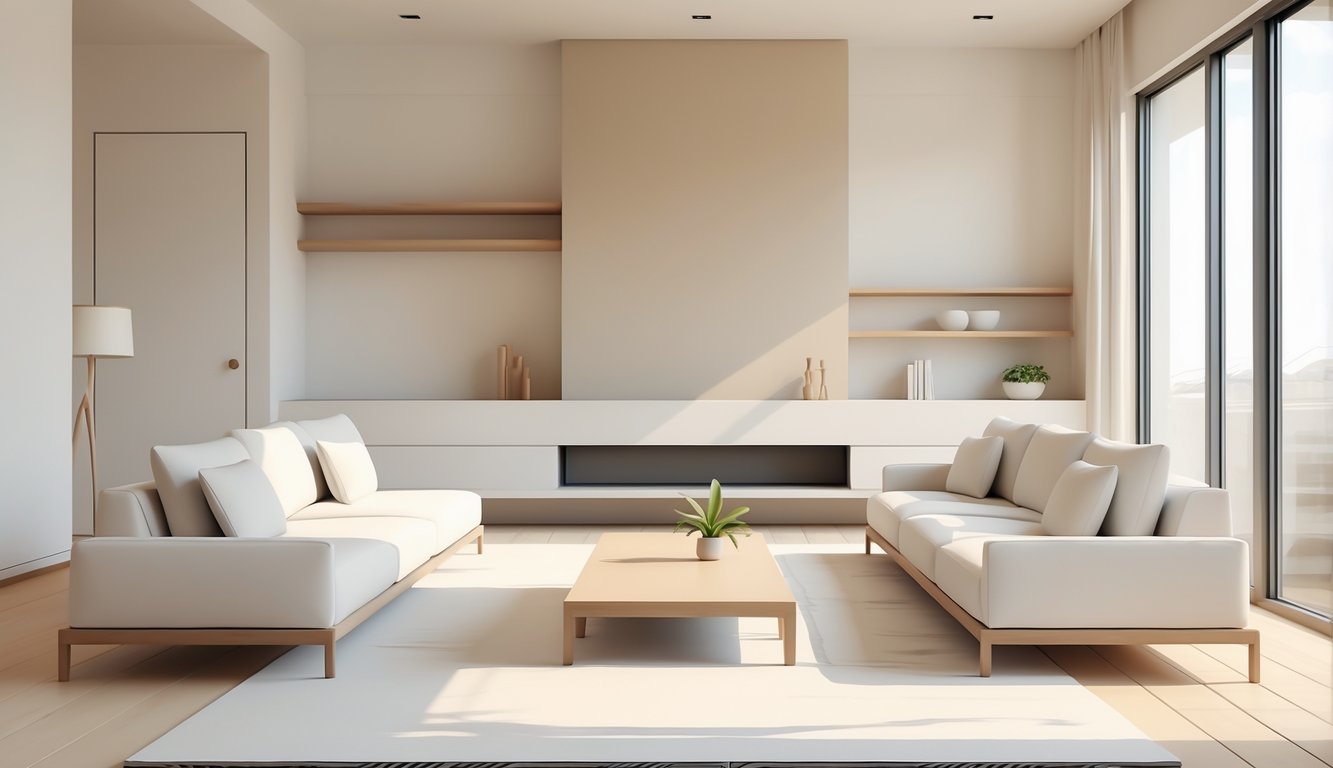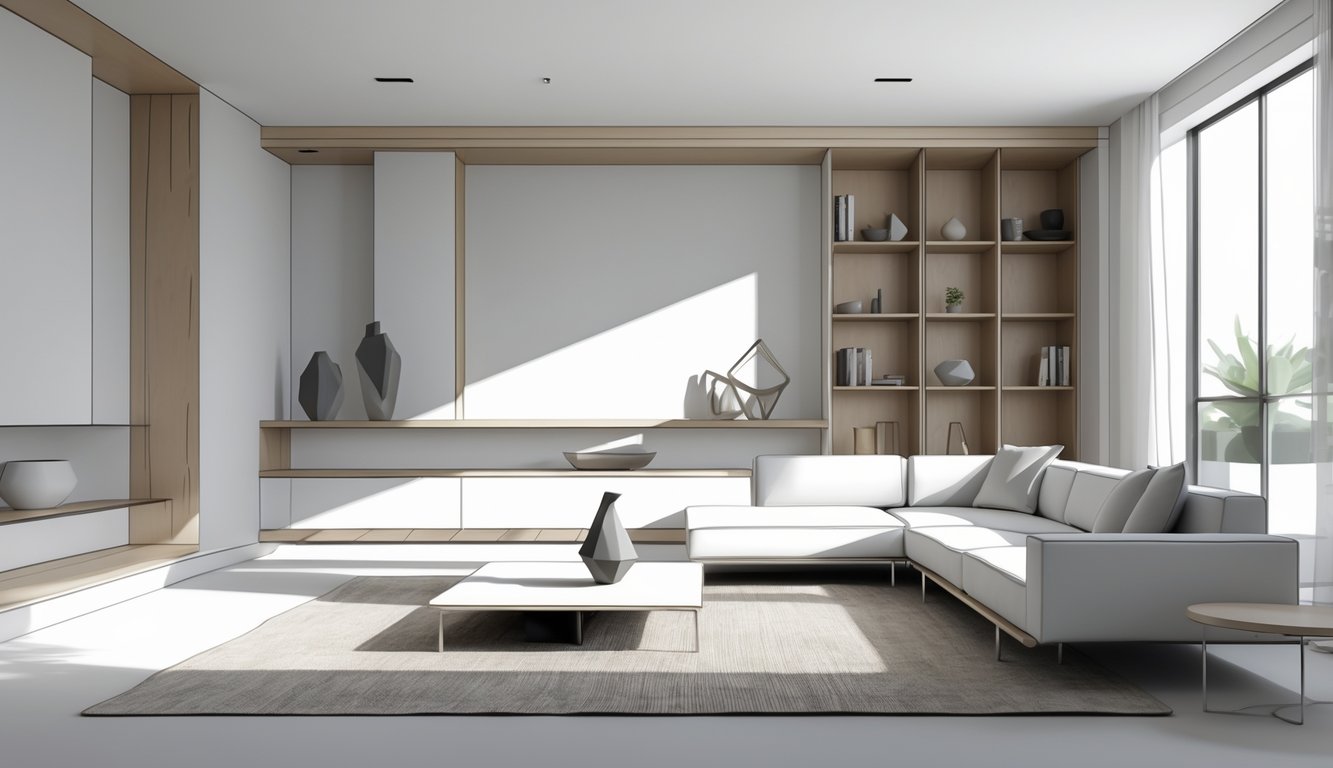
Curating a Minimalist Home: Design Choices and Statement Pieces

I keep tripping over boxes I swear I was going to unpack last year. Minimalism is supposed to mean less stuff, right? But clutter just sneaks in, no matter what. I try to stick with neutral colors, shapes that actually make you look twice, and stuff that’s useful. It’s never “done,” just less noisy.
Neutral Wall Colors and Textures
Paint swatches everywhere. I’ve got about six different “white” samples taped to my wall and honestly, they all look the same after 4 p.m. “Chantilly Lace,” “Simply White,” “Bone”—it’s all splitting hairs. Supposedly, neutral palettes let your stuff stand out, but sometimes it just feels like I’m living inside a yogurt commercial.
Textured walls, though—limewash, matte clay, whatever hides my bad paint jobs—those are my secret weapon. Mess up with the roller? You’re fine. Sherwin-Williams claims 71% of DIYers mess up their walls, which makes me feel better. Glossy finishes? Never again. Every fingerprint shows up like a crime scene.
Incorporating Sculptural Elements
Furniture that looks like sculpture, sculpture you want to sit on—sometimes I can’t tell which is which. I dragged home a brutalist chair once, looked amazing, absolutely useless to sit in. “Minimalist Living: The Beauty of Simplicity in Modern Homes” says one statement piece is enough. I guess that’s true, but sometimes it just becomes a glorified plant stand.
Sculptural lighting? Oh, it does more than you’d think. I’ve got a weird angular lamp that throws shadows everywhere and makes the room look bigger at night. Concrete planters, glass vases—if it looks weird, I’ll probably try it. John Pawson says, “Design is the search for the essential,” which I like until I bark my shin on something “essential” and reconsider everything.
Selecting Purposeful Decor
Extra stuff stresses me out now. I used to fill shelves just to fill them—no more. The National Association of Productivity & Organizing Professionals (yes, that’s a real thing, 2024) says one or two intentional pieces per room is plenty. That Eames chair I found on sale? It’s the only chair I actually use. Ceramic bowl? Holds keys, looks decent, that’s enough.
Minimalist homes in magazines never show wires, remotes, or the random tech junk I end up with. I try to keep the table clear except for a stack of books (sometimes I’ve read them, sometimes I just like the covers). Storage ottomans and beds with drawers (like this) are my new favorite thing. If something doesn’t have a reason to exist, I’m probably tossing it in the closet until I forget about it.
Minimalist Living and Well-Being
Lost my keys again—minimalism didn’t help with that. But I’ll admit, the living room feels bigger and I’m less likely to feel like my brain’s melting when I walk in.
Fostering a Calm Atmosphere
Running around with coffee, tripping over nothing because—surprise—there’s nothing left to trip over. Better Homes & Gardens says minimalist living rooms aren’t about empty white boxes, it’s about cutting out the visual noise. I ditched my old rug (my cat didn’t care), kept one piece of art, and now people say it “feels lighter.” My neighbor, the one obsessed with Scandinavian design, claims the “zen” lamp in her place boosts serotonin. I’m skeptical, but maybe she’s onto something.
When furniture isn’t crowding the windows, the light just… works better. I read that the American Psychological Association found in 2022 that less clutter drops cortisol by 22%. I believe it. The place feels calmer, even if I still stack mail under the bowl by the door because some habits die hard.
How Minimalism Enhances Well-Being
Not sure if it’s a coincidence, but my headaches are mostly gone since I started this whole “less stuff” thing. Maybe it’s the air, maybe it’s placebo, who knows. I read Lavender & Laurel’s minimalist guide and they talk about eco-minimalism: breathable fabrics, non-toxic finishes, blah blah blah. My couch is organic cotton now, which apparently matters if you have an allergic dog (my sister’s, not mine).
Less to clean means I save at least fifteen minutes a day. My therapist says simplifying my space helps my ADHD—there’s research from Dr. Susan Koven, Massachusetts General, about minimalism and mental clarity, but she never mentions what to do when you lose the remote. I do find myself breathing easier, and I like being able to see the backyard through two rooms now. The no doors movement folks might be onto something, even if it means hearing every noise from the kitchen.
Minimalist Inspirations: Influential Designers and Iconic Examples
Sitting here, elbows on the desk, staring at clutter that wasn’t here yesterday. Even the best minimalist plans fall apart—cables, boxes, random stuff everywhere. But those clean, quiet lines stick in my head. There’s this weird tension between real life and the kind of obsessive focus you see in famous designers. Maybe that’s the point.
ludwig mies van der rohe’s Legacy
Tried to build a Barcelona Chair knockoff once—ended up with extra parts and a bruised ego. Mies van der Rohe, though, made minimalism a manifesto: “Less is more.” (Not if you’re assembling Ikea furniture, though.) His buildings—Seagram, Farnsworth—never hid the structure. Steel, glass, open plans, no fancy trim. That was the whole point.
Architectural Digest and a million design blogs claim Mies’s push for raw materials changed everything. His minimalist homes still go for millions, and every fancy furniture store has their own “homage.” Some architects insist his focus on function trains you to pay attention to what matters, but I’m not sure anyone’s ever figured out how to actually live in those spaces without making a mess. Maybe that’s freeing, maybe it’s just stressful.
Modern Interpretations in Contemporary Spaces
It’s not all 1920s glass boxes now. Scandinavian minimalists—Norm Architects and the like—push natural materials, and try to avoid the “doctor’s office” look. I bought a walnut end table that looked minimalist online, but it just turned into a dumping ground for chargers.
If you scroll through minimalist interior designers, you’ll see everyone from Isamu Noguchi to Japanese architects talking about “calm spaces.” Ironic, since the more “curated” these homes get, the more my own place starts to look like a failed attempt at copying them. Gerrit Rietveld’s “useful ornament” shows up in rental kitchens and Target shelves now. Everyone wants less clutter, but unless you go full Mies and shove everything into storage, it’s just more boxes under the bed. Sometimes it works, sometimes it’s just a different kind of mess.